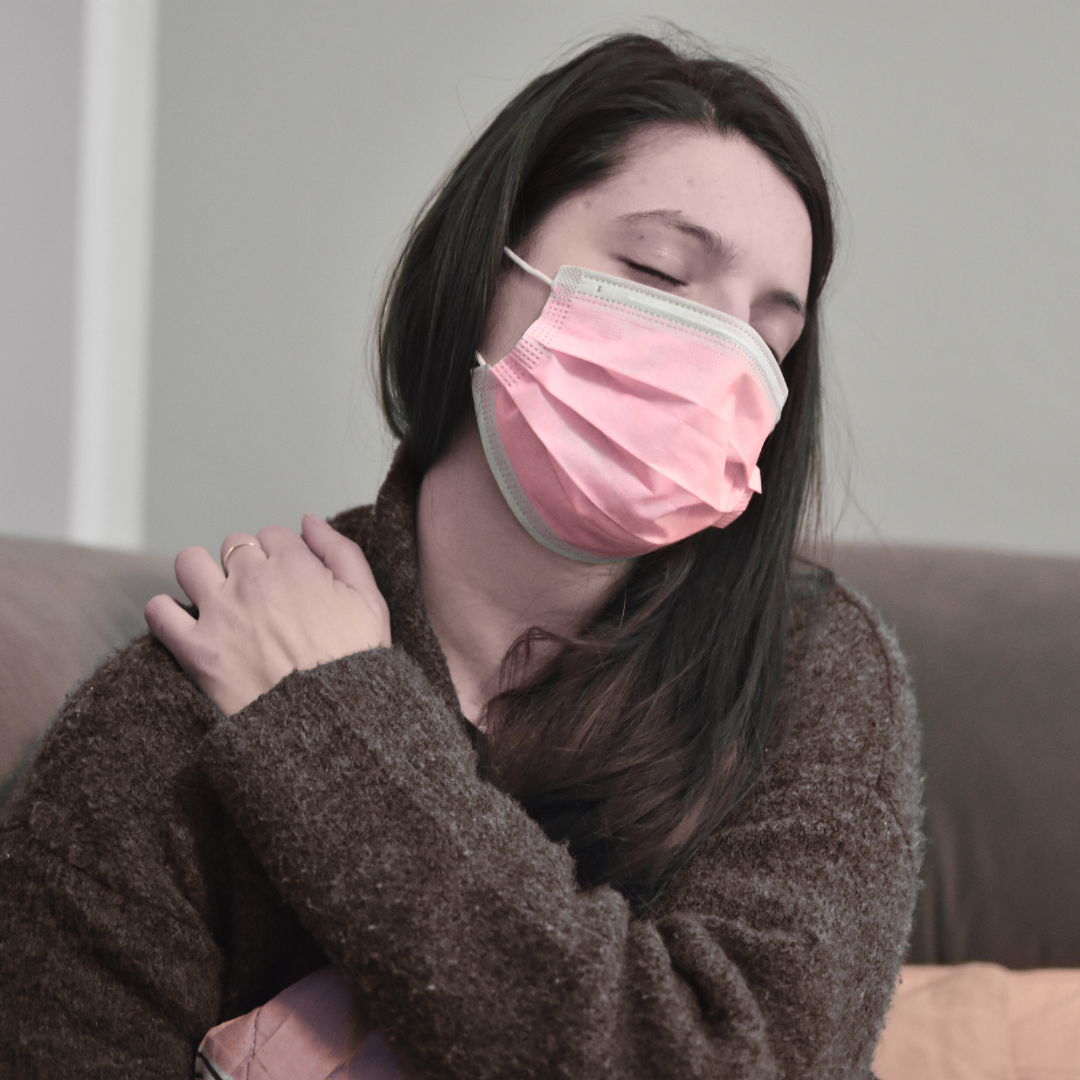Can Long COVID Cause Adrenal Dysfunction? What New Research Shows
Long COVID doesn’t just affect your lungs,it can disrupt the stress response that controls energy, focus, and resilience.
For many people, recovering from COVID doesn’t mean life goes back to normal. Long after the initial illness has passed, symptoms like fatigue, brain fog, dizziness, and mood changes linger. If you’re one of those people, you may have wondered whether your adrenal glands and stress hormones are part of the problem.
Researchers have been exploring the connection between long COVID and the HPA axis, the system that controls stress hormones. The findings are still developing, but what we know so far gives some insight into why so many people feel stuck in survival mode after COVID.
Long‑COVID Fatigue and the HPA Axis
Persistent stress in chronic illness
Your adrenal glands are part of a larger stress response network called the hypothalamus-pituitary-adrenal (HPA) axis. This system helps regulate energy, blood sugar, blood pressure, and immune function. When you’re sick, the system ramps up, producing cortisol to help you manage the stress of illness.
For some people, long COVID keeps that stress response active long after the virus has gone. Ongoing immune activation and inflammation signal the HPA axis to keep working overtime. Eventually, the adrenal glands may become less responsive, leaving you with an imbalanced cortisol rhythm.
When this happens, your body doesn’t have the same ability to handle daily demands. This can feel like you’ve lost your capacity to recover from even simple activity.
Common symptoms of adrenal dysfunction
Many long-COVID survivors describe symptoms that mirror those seen in adrenal dysfunction:
Fatigue that feels out of proportion to what you’ve done
Muscle aches and weakness
Trouble concentrating, brain fog, and memory lapses
Changes in mood, such as anxiety, irritability, or low motivation
Dizziness or shakiness, especially when standing
These symptoms often fluctuate. Some days may feel better, and then a small stressor or infection sets everything back again.
“Standard morning cortisol blood tests can miss subtle adrenal dysfunction. Saliva or urine tests reveal more about daily rhythm and stress patterns.”
What the Research Says
Evidence for adrenal changes after COVID
In 2023, researchers examined cortisol levels in patients with long COVID compared to those who had fully recovered. On average, there weren’t large differences in overall cortisol levels between the two groups. However, some individuals with long COVID did show slightly lower cortisol levels, a pattern sometimes called subclinical adrenal dysfunction.
This means that for a subset of long-COVID patients, the adrenal system may not be working as efficiently as it should, even if it doesn’t show up as a severe deficiency on standard tests.
Why results are mixed
The research on this topic is still young, and there are a few reasons why findings vary:
Timing of testing: Cortisol naturally changes throughout the day, so a single morning blood test may not show the full picture.
Differences between patients: Not everyone with long COVID experiences the same symptoms or stress patterns.
Type of testing: Saliva or urine tests that look at cortisol rhythm throughout the day may detect patterns that a single blood test can miss.
In other words, just because a single cortisol test looks “normal” doesn’t mean your stress response system is balanced.
Theories on mechanisms
Scientists have proposed several possible ways long COVID could affect the adrenal glands and HPA axis:
Chronic inflammation: Persistent inflammation after the virus can keep stress signals active and disrupt normal hormone patterns.
Autoimmunity: Some researchers believe the immune system may mistakenly target the adrenal glands or related tissues.
Autonomic dysregulation: Long COVID is known to affect the autonomic nervous system (leading to issues like POTS), and this same system is closely tied to the stress response.
These mechanisms may combine, making recovery more complicated.
Supporting Adrenal Health in Long COVID
Even though the science is still evolving, there are things you can do to support the HPA axis and your recovery.
Lifestyle foundations
Focus on daily rhythms that give your body a sense of stability:
Eat nutrient-dense meals that balance protein, healthy fats, and slow-digesting carbs.
Avoid long gaps without food, which can trigger dips in blood sugar and stress hormones.
Stay hydrated and add electrolytes if you notice dizziness or fatigue when standing.
Incorporate gentle movement, like stretching or short walks, while respecting your body’s limits.
Salt your food to support blood pressure, especially if you feel lightheaded on standing.
These small, steady habits reduce unnecessary stress on the system.
Nervous system and stress support
Long COVID can keep the nervous system in a state of high alert. Simple practices help bring that system back into balance:
Slow, deep breathing with longer exhales
Gentle humming or singing to stimulate the vagus nerve
Pacing yourself throughout the day rather than pushing to exhaustion
These signals of safety can gradually help the HPA axis regulate itself again.
Testing and professional guidance
If fatigue is severe or doesn’t improve, it’s worth working with a practitioner who understands both long COVID and stress physiology. Saliva-based cortisol rhythm testing and ACTH testing can reveal whether your adrenal glands are responding appropriately throughout the day.
Because research is still emerging, personalized care matters. Recovery can be slow, but with the right support, many people see gradual improvement over time.
“Gentle daily rhythms, steady nutrition, and nervous system support can help the HPA axis regain balance after long COVID.”
Moving Forward When Healing Feels Stuck
If you’re living with long COVID and wondering why your energy never fully comes back, you are not imagining things. Your stress system may be under strain, and it may need guidance to return to balance.
At our clinic, we use functional testing and step-by-step strategies to uncover the root contributors to fatigue, whether they are related to the HPA axis, nervous system, or hidden imbalances left behind by the virus.
Inside the Nervous System Healing Code, you’ll learn how to regulate your stress response, support energy production, and rebuild resilience. With time, these changes can help you feel steadier, clearer, and more in control of your recovery.
You don’t have to navigate this process alone. You can join our program or schedule a one-on-one consultation today. There is a path forward, even when progress feels slow.
Further Reading:
Low cortisol may play a role in fueling long COVID, study suggests
Hypocortisolism post-COVID-19: Possible Pituitary Disruption
Adrenal function in patients after COVID-19: 3-month and 12-month follow-up
Reversible central adrenal insufficiency in survivors of COVID-19
Endocrine and metabolic aspects of COVID-19 and chronic fatigue
Endocrine consequences of COVID-19: what happens to the adrenal glands?
Hypothalamic–Pituitary Axis Function and Adrenal Insufficiency in Long COVID












